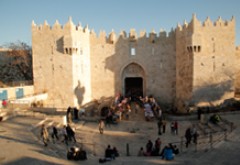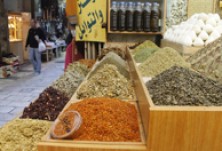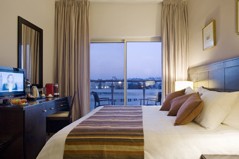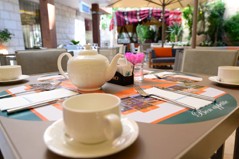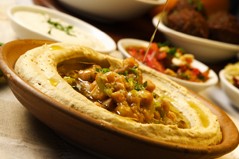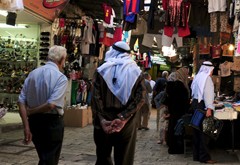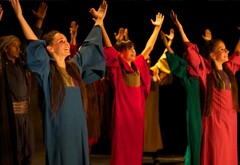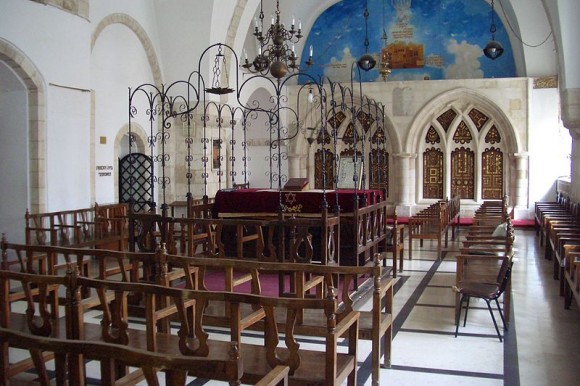These four synagogues form one fourth of the Jewish Quarter and are located right in its middle, a few steps below the street level. It has no architectural distinguishing characteristics or delineated borders among them, making them look like one structure.
These synagogues were established by Sephardic Jews at the turn of the 17th century, after the Ramban Synagogue was lost in 1586. The first of the synagogues was built around 1625, and is actually the largest of the four, and is considered by some as the most significant. It is the Yochanan Ben Zakkai Synagogue, which has the shape of a long large hall with the praying pulpit (Bamah) in its middle.
The second is the Prophet Elia Synagogue, to the north west of the first. They are separated by a wall. It is composed of a square hall with irregular dimensions, and covered by a dome. Around the hall is a group of small rooms.
In about the year 1720, a ceiling was added to the area between the two structures (13 meters long and 3.7 meters wide), making it a third synagogues adequately named the "Middle Synagogue." This synagogue can be accessed by the north wall of the Yochanan Ben Zakkai Synagogue, where there is a narrow square access area.
The fourth synagogue is known as the Large Istanbul synagogue, and was added to the building in 1740. It was built by Jews arriving from Turkey, and hence the name. It is a square building covered by a high dome, with more rooms around the periphery.
These synagogues were grouped, most likely, in the 19th century, to form a synagogue complex. As a result of the organic growth of the community, and what was added and rebuilt in 1967, it becomes difficult to understand the details of the site. At the turn of the 19th century, the complex was in a bad structural state and about to collapse. It was renovated in 1838 and arts of it were rebuilt. Other parts were used as a children's school.
Due to its low elevation, the complex was not used as a firing post during the 1948 and was thus left untouched. It was renovated after the 1967 war. It is currently used as a church and a Yeshiva.

